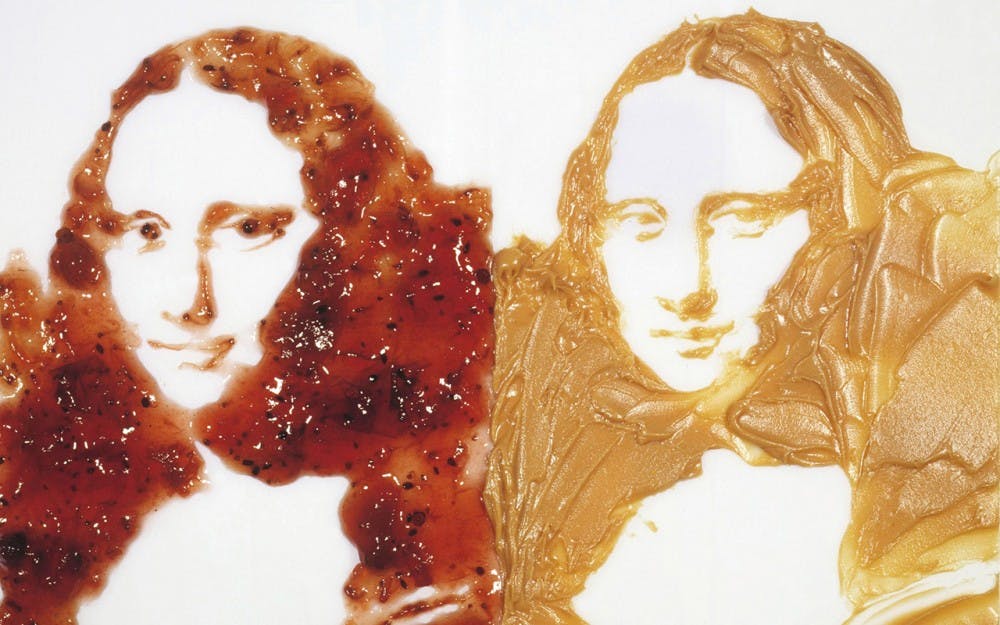The School of Fine Arts Auditorium was packed for artist Vik Muniz’s lecture Friday. The event immediately preceded the opening of his show, “Vik Muniz,” at the Eskenazi Museum of Art.
Students and community members filled every seat in the lecture hall, flooded the side aisles leading up to the stage and occupied the area toward the back of the auditorium.
Director David Brenneman acknowledged the packed house with excitement.
“It’s my great pleasure to welcome Vik Muniz to Bloomington, Indiana, or B-town,” Brenneman said. “It took time and resources to bring Vik and his art to Bloomington.”
Brenneman said Muniz spent the day speaking with students through a variety of media and, though one can find out more biographically about the artist by searching for him online, his humanity is what stands out the most.
“What I do want to tell you is that Vik is an amazing human being,” Brenneman said. “He is incredibly thoughtful, generous and caring. I think that’s something that really comes out in his work and that you’re really going to get a whiff of this evening. He is a true philanthropist, and, frankly, we need more human beings like him.”
Muniz spoke before the talk about his interest in people from the perspective of a human being rather than that of an artist.
“My work is to develop ways and inspire people to move through this maze of very confusing visual messages in an effective and pragmatic way,” Muniz said. “I am affected by the human condition the same way you are or the policeman or the baker. I don’t think artists’ opinions are better than anybody else, but, if we stick to what we do, artists deal with images.”
Muniz spoke during the lecture about his background in art — where he started both personally and professionally — as well as his experience with images and their significance in his life.
One of the earliest anecdotes Muniz shared dealt with learning to read from his grandmother and an old Encyclopedia Britannica.
Muniz said his grandmother taught herself how to read, and that experience shaped his perception of the written word.
“That Encyclopedia Brittanica had a lot to do with my work because the images of the Encyclopedia were so bad, you didn’t know if they were good drawings or bad photographs,” Muniz said. “I liked that kind of ambiguity.”
Muniz also shared his experiences in the world of advertising, the flaws he saw billboards and how he approached agencies to suggest needed changes. He spoke about his observation that certain advertisements along busy roads may miss the target audience because of the style and placement.
Muniz’s more recent work deals with a variety of subjects, some with heavier themes such as child labor and social injustice, and some dealing with more playful material and subject matter.
The work Muniz is displaying at the Eskenazi through February includes photographs of pieces made from materials ranging from junk to toy soldier to caviar.
Muniz said he tries not to allow anything to influence what his works will be because he often allows either the theme or the unconventional material to strike him organically.
“For inspiration I go to bookstores, I go to toy stores, I love antique shops and things like that,” Muniz said. “I really don’t have a reliable constant source of inspiration. I like to keep everything open. The fact that I have the studio in my house gets me close to the kitchen so I can go there and pick up materials that I need.”
Muniz said when he moved to the United States, his artistic career involved creating replicas of famous paintings, and his favorites were paintings of battle scenes involving ships.
One art opening in particular exposed him to the connective quality of art.
“I remember looking at that picture and nobody had to explain to me what it was, because I saw myself in that picture,” Muniz said. “I saw somebody trying to do well in this duplicity of worlds that range from the world of personal, mundane existence and the world of movies.”
The work of an artist is to allow the audience a chance to mediate their surroundings, the worlds that are known and those that can be learned and interpreted, Muniz said.
“He’s creating tools and instruments for our minds to deal with matter and phenomenon, for us to understand space, time, the minds of other people, history. All these concepts were possible through the advent of representation,” Muniz said about artists.
Muniz said his work is similar to classic art of creators like Paul Cezzane.
He said the world around the art has changed with the advantages of technology.
“I’m just trying to describe the world that I live in,” Muniz said. “I’m the same artist. It’s just the landscape that has changed. Nothing is simple. Every concept, every image is a product of millions of similar images you’ve seen before.”




